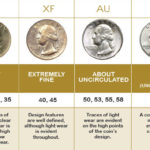coin grading
THANK YOU FOR POSTING A REVIEW!
Your review was sent successfully and is now waiting for our staff to publish it.
-
Why Do Coins of the Same Grade Have Different Prices?
(Read More)I am a 2nd generation Coin Dealer. Over the years, countless numbers of clients have asked me many different questions. I’m going to take this opportunity to answer one of the most common questions I get asked by new coin investors: “Why do two of the exact same coins, with the same grade, have different prices?”
Posted in About Coin Grading -
Glossary
A | B | C | D | E | F | G | H | I | J | K | L | M | N | O | P | Q | R | S | T | U | V | W | X | Y | Z A ANA Abbreviation for the American Numismatic Association The...(Read More)Posted in Glossary -
Understanding the Point Grading Scale
(Read More)The table below shows each of the point scores on the modern Point Grading Scale along with their corresponding descriptive categories and abbreviations, and is followed by a list of detailed category explanations and defining characteristics.
Note: The Difference between Mint State and Proof Grades
The term “Mint State” is a grader’s designation for a regular Business Strike coin that has never been circulated: e.g. one in the same approximate condition as when it was first produced. A Mint State (MS) coin is graded between 60 (with marks) and 70 (flawless/gem-like)—the highest grade a Business Strike coin can achieve.
Posted in About Coin Grading -
What is Coin Grading?
(Read More)When it comes to purchasing a product, one of the most important factors in evaluating fair price is a sure sense of a product’s condition. When buying a used car, for example, it is smart to have a trusted mechanic first check under the hood. You want to establish a proven set of criteria to be sure you are making a good investment. The same is true with coins.
Tags: coin grading & coinsPosted in About Coin Grading
4 Item(s)
-
Silver Remains On The Defensive Below $27.50 On Easing Middle East Tensions By
Mint State Gold
April 24 2024
-
China's Demand for Gold Is Unstoppable As Consumers, Investors, And The Central Bank Fuel A Record-Breaking Price Surge By
Mint State Gold
April 22 2024









